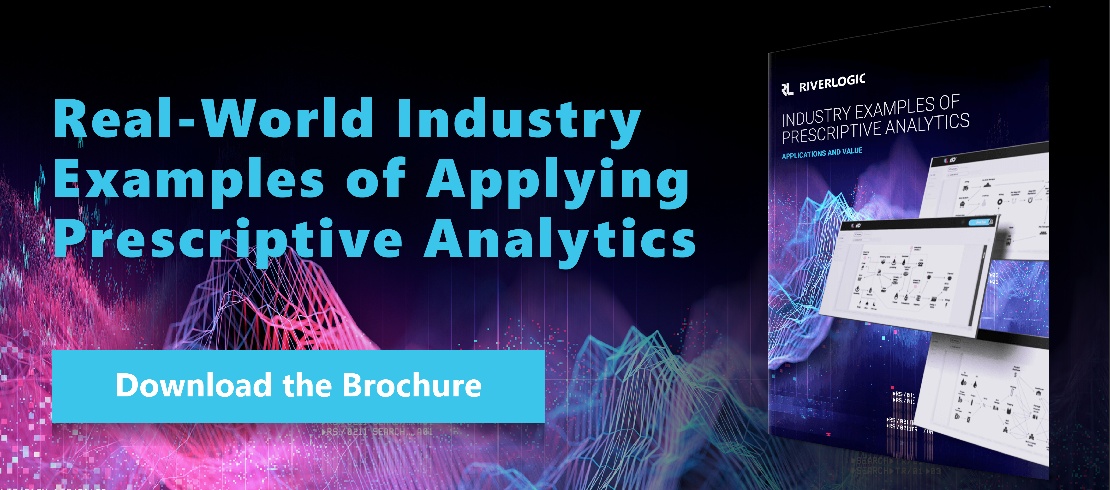Fortunately, the development of fifth-generation constraint-based programming has greatly simplified prescriptive analytics model preparation, and it’s no longer necessary to have advanced mathematical programming skills.
While there are still certain prerequisites, prescriptive analytics have been democratized to the extent that almost anyone can use them to guide their decision-making. Here’s how you can start using prescriptive analytics.
What Is Prescriptive Analytics?
Prescriptive analytics is a technique used to determine data-driven answers to questions such as what should be done or how can we optimize our business or function. Most solutions entail the preparation of a mathematical model that closely resembles the business and the use of optimization software and algorithms to determine an optimal solution.
There are two primary forms of prescriptive analytics software, heuristics (business rules and decision trees) and constraint-based optimization modeling.
Heuristics
Heuristics, or rules-based modeling, determines answers based on a series of complex decision trees and matrixes. Heuristics works well in clearly defined situations but is constrained in that the answer must be one of a number of predefined solutions.
Optimization modeling
Optimization modeling uses linear programming techniques to determine specific optimal solutions to complex problems. Optimization modeling can successfully handle highly complex scenarios with numerous variables and constraints.

Prescriptive Analytics Applications
Prescriptive analytics is about determining the best way to influence the future. Companies use prescriptive analytics to provide answers to complex business problems, while executives use it to determine the best business decision for any particular situation. Here are some examples:
- A building products manufacturer used prescriptive analytics to optimize production of more than 100 different wood products across two dozen plants to achieve increased profits while fulfilling product demand.
- A hospital in Quebec used prescriptive analytics to model patient flow and determine the most cost-effective solution to managing patients without reducing the quality of care in a constrained budget situation.
- A snack food company that was unable to meet demand for its most profitable products leveraged prescriptive analytics modeling to simultaneously increase throughput, reduce labor cost and meet demand.

How to Know If You’re Ready for Prescriptive Analytics
Are you faced with a situation where you’re unable to determine whether the decisions you make are the best for your business? It may be that the number of variables is so great it’s virtually impossible to take them all into consideration. Or that your spreadsheets and other decision support systems don’t allow you to factor in constraints and trade-offs.
Alternatively, planning processes may be so complex that you’re forced to handle steps sequentially, and it’s impossible to optimize outcomes. In other situations, you may be forced to make decisions based on gut feel because you don’t have decision support systems able to guide your decision making.
In principle, any decision where the number of variables exceeds 20 represents a good opportunity for prescriptive analytics optimization. For example, a plant with four production lines producing three products supplied to five customers would have 60 variables. In these instances, the best most planners can achieve is determining a viable production plan that will work, not the optimal one. Planning decisions are further complicated by the need to consider constraints such as production capacity limitations, maximum sales price and customer takeoff rates.
If this applies to you, then it’s likely you’re ready for prescriptive analytics.
12 Steps to Get Started with Prescriptive Analytics
So, how do you get started with prescriptive analytics? Here are some tips; you’ll find more details in our Guide to Prescriptive Analytics for Business Leaders.
- Determine the problem to be solved: Establish a first use case, preferably one that’s not overly complex and where there’s a reasonable prospect of an early success.
- Obtain executive support: Verify the organization is prepared to sponsor and support a proof of concept case, especially in terms of engaging with a vendor, redeploying staff and establishing a budget.
- Select the right technology: Determine how the model is going to be prepared, who’s going to do the work and what technology to use. Engage a vendor, or if you’re going to hardcode the model from scratch, appoint a data scientist.
- Determine the scope of the project: Establish who would be involved, whether a limited model would suffice or if there’s a need to obtain support and commitment from multiple business users for a large-scale project.
- Establish a vision: Determine what you hope to achieve.
- Set up a team: Establish a team including a sponsor, project leader and steering committee.
- Project design: Determine model requirements and refine the scope of the project.
- Build and validate the model: Create a model that represents the problem, populate it with known data, and validate the model to ensure it accurately represents known outcomes.
- Prepare your data: Identify all data required and transform data as necessary so the model can read and use the data.
- User interface: Set up an interface that allows users to enter data, run scenarios and interrogate results.
- Test the model: Comprehensively test the model to ensure it works as required and that all bugs are ironed out.
- Implementation and roll out: Start using the model.
Learn to Walk Before You Run
As can be ascertained from the above, prescriptive analytics modeling does require a significant commitment from the organization. A key consideration is determining the technology to be used and whether the model will be developed in-house or with the assistance of a vendor.
While practical, the traditional approach of hardcoding prescriptive analytics models using third- and fourth-generation programming languages is expensive and slow.
A more modern approach is to use a fifth-generation programming language such as Enterprise Optimizer that utilizes intuitive drag-and-drop programming techniques to create a constraint-based visual model. This is faster and has the major advantage that the process is transparent and easy to follow, something that’s not possible with hard coded models.
Whichever approach you prefer, it’s best to seek some form of expert assistance until your organization has developed the requisite in-house skills.







